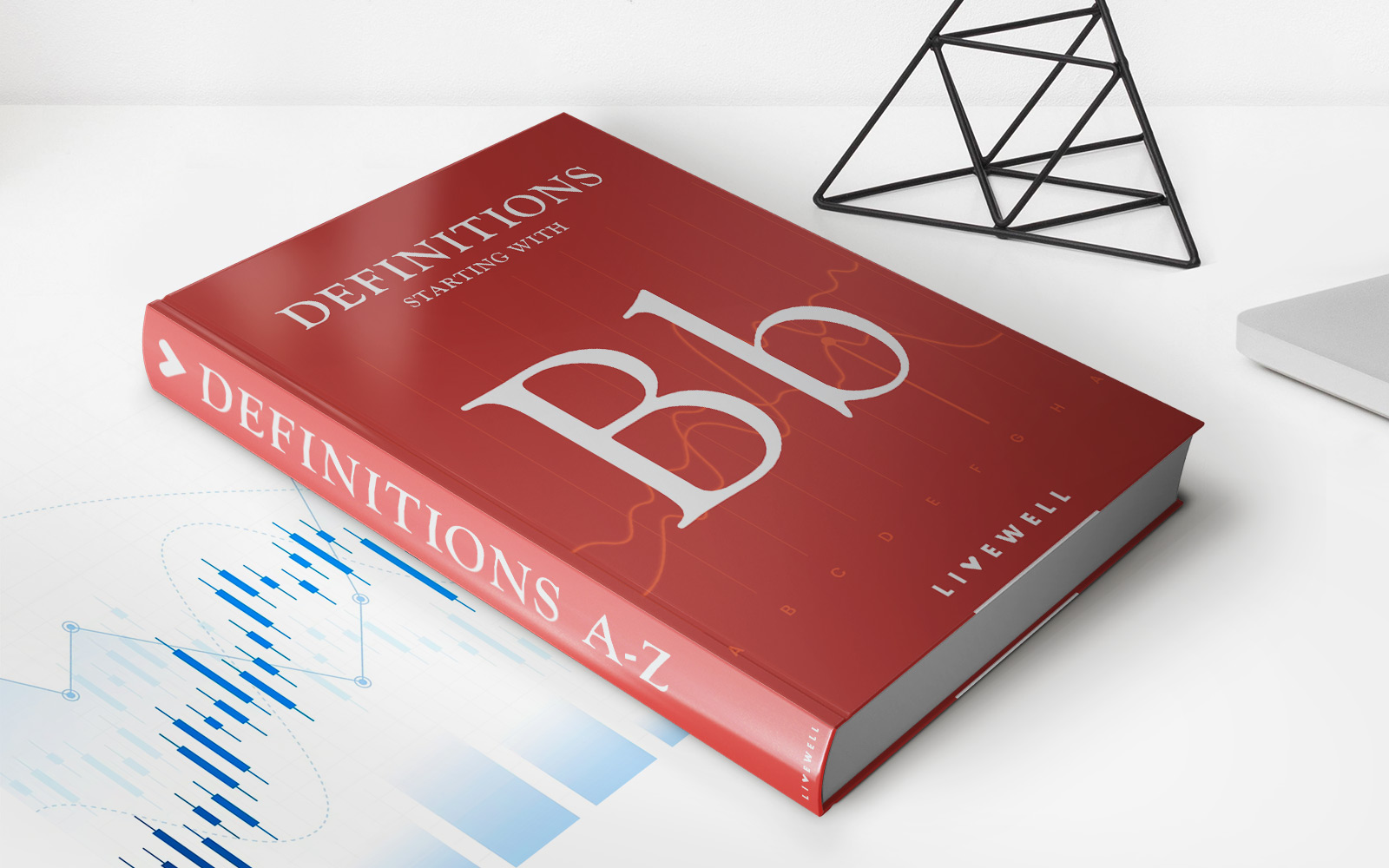

Finance
What Is A Credit Header
Published: January 10, 2024
Discover what a credit header is and how it impacts your finances. Gain insights into its importance in understanding and managing your financial well-being.
(Many of the links in this article redirect to a specific reviewed product. Your purchase of these products through affiliate links helps to generate commission for LiveWell, at no extra cost. Learn more)
Table of Contents
Introduction
Welcome to the world of credit headers, a term that may be unfamiliar to some but holds great significance in the realm of finance. In this article, we will delve into the definition, importance, components, purpose, and usage of credit headers. Understanding the intricacies of credit headers is essential for individuals and businesses alike, as they play a vital role in assessing creditworthiness and establishing trust in financial transactions.
A credit header, also known as a credit report header or credit file header, is a crucial element of a credit report. It is the top section of a credit report that contains essential information about an individual or an entity, such as their name, address, social security number, and date of birth. This section serves as an identifier and helps ensure accurate reporting and identification.
Why is the credit header so important? Well, it serves as the foundation for the entire credit report. It provides context and a snapshot of the individual or entity’s credit history, enabling lenders, financial institutions, and other relevant entities to make informed decisions regarding credit applications, loans, and other financial transactions. A well-structured and accurate credit header can significantly impact the outcome of such decisions.
The components of a credit header typically include the individual or entity’s name, address, date of birth, social security number, and other identifying details. These details are used to verify identity and establish a unique identifier for credit reporting purposes. It is crucial for the information in the credit header to be accurate and up-to-date, as any discrepancies or errors can lead to complications and potential issues with credit applications or related transactions.
The purpose of the credit header is twofold. Firstly, it serves as a means of accurately identifying the individual or entity in question. By including key identification details such as name, address, and social security number, the credit header enables accurate reporting and ensures that the credit report is associated with the correct individual or entity. Secondly, the credit header provides a summary of the individual or entity’s credit history, facilitating a quick assessment of their creditworthiness.
How is the credit header used? Lenders, financial institutions, and other relevant entities rely on the information provided in the credit header to assess an individual or entity’s creditworthiness. When a credit application is submitted, the lender will pull the credit report, which includes the credit header, to analyze the applicant’s credit history and determine whether to approve or deny the application. Additionally, the credit header is used for identity verification purposes and to ensure accurate reporting of credit information.
The benefits of having a well-maintained credit header are numerous. For individuals, a clean and accurate credit header can improve their chances of obtaining loans, credit cards, or other forms of credit. It reflects positively on their financial responsibility and reliability, enabling them to secure more favorable terms and rates. It also simplifies the credit application process, as accurate identification information reduces the risk of mistaken identity or incorrect credit reporting.
Now that we’ve covered the basics of credit headers, let’s explore some examples and common mistakes to further enhance our understanding. Understanding these examples and pitfalls will help individuals and entities ensure that their credit headers are in optimal condition, maximizing their opportunities in the financial realm.
Definition of Credit Header
A credit header is the top section of a credit report that contains vital personal and identifying information about an individual or entity. It serves as a foundational component of the credit report and provides essential context for assessing creditworthiness and conducting financial transactions. The credit header includes details such as name, address, social security number, and date of birth, among other identifying information.
The purpose of the credit header is to establish accurate identification and ensure that the credit report is associated with the correct individual or entity. By including key identifying details, the credit header helps prevent cases of mistaken identity and ensures that credit information is accurately reported.
When a credit application is submitted, lenders and financial institutions use the credit header, along with other sections of the credit report, to assess an individual or entity’s creditworthiness. The information in the credit header provides a snapshot of the individual’s or entity’s credit history, allowing lenders to evaluate their financial responsibility and make informed decisions regarding credit applications, loans, or other financial transactions.
The components of a credit header typically include:
- Name: The full legal name of the individual or entity.
- Address: The current residential address or business address for entities.
- Social Security Number: A unique identifier issued by the government for individuals. For entities, a tax identification number or employer identification number may be used.
- Date of Birth: The birth date of an individual.
- Other Identifying Details: Additional information that assists in accurately identifying the individual or entity, such as driver’s license number or passport number.
It is essential for the information in the credit header to be accurate and up-to-date. Any discrepancies or errors in the credit header can have significant consequences, potentially leading to mistaken identity, incorrect credit reporting, or complications with credit applications and related transactions.
Overall, the credit header serves as a crucial element of a credit report, providing necessary identification and summarizing an individual’s or entity’s credit history. Understanding the components and importance of the credit header is vital for individuals and entities looking to establish trust and navigate the world of finance effectively.
Importance of Credit Header
The credit header plays a significant role in the world of finance, as it holds great importance for individuals, businesses, and financial institutions. Understanding the significance of the credit header is crucial for effectively managing credit and financial transactions. Let’s explore the key reasons why the credit header is so important:
1. Identification and Accuracy: The credit header provides accurate identification information for individuals and entities. It includes details such as name, address, social security number, and date of birth, which are essential for verifying identity and ensuring accurate credit reporting. By establishing accurate identification, the credit header minimizes the risk of mistaken identity and helps in associating the credit report with the correct individual or entity.
2. Trust and Reliability: A well-maintained credit header enhances trust and reliability in financial transactions. Lenders and financial institutions rely on the credit header to assess an individual’s or entity’s creditworthiness. A clean and accurate credit header reflects positively on the financial responsibility of the individual or entity, giving lenders confidence in their ability to manage credit and repay loans. This trust and reliability can result in more favorable terms, rates, and opportunities for credit.
3. Decision-Making Tool: The credit header serves as a decision-making tool for lenders and financial institutions. When evaluating credit applications, lenders analyze the information in the credit header, along with other sections of the credit report, to determine whether to approve or deny the application. The credit header provides a summary of the individual’s or entity’s credit history, allowing lenders to assess their creditworthiness and make informed decisions.
4. Risk Assessment: The credit header enables risk assessment in financial transactions. By analyzing the credit header, lenders and financial institutions can evaluate the potential risks associated with extending credit or engaging in financial agreements. This assessment helps mitigate the risk of default or non-payment, enabling lenders to make appropriate decisions regarding credit limits, interest rates, and loan terms.
5. Accuracy in Credit Reporting: The credit header ensures accurate reporting of credit information. By maintaining accurate identity details in the credit header, individuals and entities can prevent inaccuracies or discrepancies in their credit reports. This accuracy is crucial when applying for credit or seeking to rectify any errors or discrepancies that may arise. It allows individuals and entities to present a reliable credit history, free from any inaccuracies that could adversely impact their creditworthiness.
6. Efficient Credit Application Process: A well-maintained credit header simplifies the credit application process. Accurate identification details in the credit header save time and effort by reducing the risk of mistaken identity or incorrect credit reporting. Lenders can quickly verify and match the credit application with the individual’s or entity’s credit report, leading to a smoother and more efficient credit approval process.
Overall, the credit header holds immense importance in the world of finance. It establishes accurate identification, enhances trust and reliability, serves as a decision-making tool, enables risk assessment, ensures accurate credit reporting, and streamlines the credit application process. Understanding the significance of the credit header empowers individuals and entities to manage credit effectively and navigate the financial landscape with confidence.
Components of a Credit Header
The credit header is a vital section of a credit report, comprising various components that provide essential identification information about an individual or entity. These components ensure accuracy and facilitate the proper association of credit history with the correct individual or entity. Let’s explore the key components of a credit header:
Name: The name of the individual or entity is a fundamental component of the credit header. It includes the full legal name of the individual or the business name for entities. The name serves as a primary identifier to associate credit history with the correct person or entity.
Address: The address component in the credit header specifies the current residential address for individuals or the business address for entities. It helps to establish the physical location and provides necessary contact information for the individual or entity. It is crucial for the address to be accurate and up-to-date to ensure reliable correspondence.
Social Security Number (SSN) or Tax Identification Number (TIN): For individuals, the credit header includes their Social Security Number (SSN), a unique identifier issued by the government. Entities may use a Tax Identification Number (TIN) or Employer Identification Number (EIN) instead. These numbers play a crucial role in accurately identifying the individual or entity in credit reporting systems.
Date of Birth: The date of birth component in the credit header provides the individual’s birthdate. It helps in verifying identity and can be a critical piece of information for accurate identification, especially when there are individuals with similar names.
Other Identifying Details: The credit header may include additional identifying details to establish a unique identifier. These can include a driver’s license number, passport number, or other identification numbers that are relevant and required for accurate identification and reporting.
It is essential for all the components of the credit header to be accurate and up-to-date. Any discrepancies or errors in these components can lead to complications, such as mistaken identity or incorrect credit reporting. It is the responsibility of the individual or entity to ensure that the information in the credit header is correct and reflects their current status.
Overall, the components of the credit header – name, address, social security number or tax identification number, date of birth, and other identifying details – work together to establish accurate identification and associate credit history with the correct individual or entity. Keeping these components accurate and up-to-date is crucial for ensuring reliable credit reporting and minimizing the risk of any potential issues or complications in financial transactions.
Purpose of Credit Header
The purpose of the credit header is twofold: to accurately identify individuals or entities and to provide a summary of their credit history. By serving as the top section of a credit report, the credit header plays a crucial role in financial transactions and credit assessment. Let’s explore the main purposes of the credit header:
1. Accurate Identification: The credit header ensures accurate identification of individuals or entities. By including key information such as name, address, social security number, and date of birth, the credit header establishes a unique identifier. This identification is crucial to accurately associate credit history with the correct individual or entity, minimizing the risk of mistaken identity and ensuring that credit information is accurately reported.
2. Summary of Credit History: The credit header provides a summary of an individual’s or entity’s credit history. It serves as a snapshot of their creditworthiness, showing important information such as credit accounts, credit limits, loan balances, payment history, and any negative information such as late payments or defaults. This summary allows lenders and financial institutions to quickly assess an individual’s or entity’s creditworthiness and make informed decisions regarding credit applications, loans, or other financial transactions.
3. Evaluation of Creditworthiness: The credit header helps lenders and financial institutions evaluate an individual’s or entity’s creditworthiness. By examining the information in the credit header, including credit history and other financial details, lenders can assess the level of risk associated with extending credit or engaging in financial agreements. This evaluation of creditworthiness influences decisions regarding loan approvals, credit limits, interest rates, and other terms and conditions.
4. Identity Verification: The credit header serves as a tool for identity verification. In a world where identity theft and fraudulent activities are prevalent, the credit header provides a reliable source of identifying information. Lenders and financial institutions can use the details in the credit header, such as social security number or tax identification number, to verify the identity of an individual or entity, ensuring that credit applications and transactions are conducted with the correct parties.
5. Accuracy in Credit Reporting: An accurate credit header ensures precise credit reporting. By maintaining up-to-date information in the credit header, individuals and entities can ensure that their credit history is accurately reflected in the credit report. This accuracy is crucial when applying for credit or seeking to rectify any errors or discrepancies that may arise. It allows individuals and entities to present a reliable credit history, free from any inaccuracies that could adversely impact their creditworthiness.
6. Facilitation of Financial Transactions: The credit header streamlines the credit application process and other financial transactions. By providing accurate identification details and summarizing credit history, the credit header simplifies the verification process for lenders and financial institutions. It ensures that credit applications and transactions are processed efficiently, minimizing delays and potential complications.
Overall, the purpose of the credit header is to accurately identify individuals or entities and provide a summary of their credit history. It enables the evaluation of creditworthiness, facilitates identity verification, ensures accurate credit reporting, and streamlines financial transactions. Understanding the purpose of the credit header is crucial for individuals and entities looking to navigate the world of credit and finance effectively.
How Credit Header is Used
The credit header is a critical component of a credit report and is used by various entities to assess creditworthiness, verify identity, and make informed decisions regarding financial transactions. Let’s explore how the credit header is used and its significance in various contexts:
Credit Applications: When individuals or entities apply for credit, lenders and financial institutions use the credit header to verify identity and assess creditworthiness. By examining the information in the credit header, such as name, address, social security number, and date of birth, lenders can ensure that the credit application is associated with the correct individual or entity. They also analyze the credit history summarized in the credit header to evaluate creditworthiness and make informed decisions regarding loan approvals, credit limits, and interest rates.
Loan Underwriting: In the loan underwriting process, lenders utilize the credit header to evaluate credit risk. By reviewing the credit history and identifying details in the credit header, lenders assess the borrower’s ability to repay the loan. The credit header helps lenders determine the interest rate, loan terms, and the overall risk associated with extending credit.
Identity Verification: The credit header serves as a tool for identity verification. Lenders and financial institutions use the information in the credit header, such as social security number or tax identification number, to authenticate the identity of an individual or entity. This verification ensures that credit applications and financial transactions are conducted with the correct parties and minimizes the risk of identity theft and fraud.
Credit Reporting: Credit reporting agencies rely on the credit header to generate accurate credit reports. The credit header provides the necessary identification information that aligns credit history with the correct individual or entity. Credit reporting agencies use this information to compile comprehensive credit reports that reflect an individual’s or entity’s creditworthiness, payment history, and other relevant details.
Background Checks: Employers and landlords may use the credit header as part of background checks when evaluating potential employees or tenants. By reviewing the credit header, they can confirm identity and assess an individual’s financial responsibility. The credit header provides insight into an individual’s credit history and can be a factor in making decisions related to employment or housing.
Financial Decision-Making: The credit header is a valuable tool for individuals and entities to make informed financial decisions. By reviewing the credit header, they can assess their own creditworthiness, identify areas for improvement, and take steps to build or maintain a strong credit profile. The information in the credit header can also be used to monitor for potential errors or fraudulent activities.
Overall, the credit header is used by lenders, financial institutions, credit reporting agencies, employers, landlords, and individuals themselves in various financial contexts. It plays a crucial role in assessing creditworthiness, verifying identity, generating accurate credit reports, conducting background checks, and making informed financial decisions. Understanding how the credit header is used empowers individuals and entities to navigate the complexities of the financial world more effectively.
Benefits of Having a Credit Header
The credit header carries numerous benefits for individuals and entities in the world of finance. It serves as a foundational element of a credit report, providing accurate identification and summarizing an individual’s or entity’s credit history. Let’s explore the key benefits of having a well-maintained credit header:
1. Improved Credit Opportunities: A clean and accurate credit header can enhance an individual’s or entity’s credit opportunities. Lenders and financial institutions rely on the credit header to assess creditworthiness and make lending decisions. A positive credit history reflected in the credit header showcases financial responsibility, making individuals and entities more desirable candidates for loans, credit cards, and other forms of credit. It can also lead to more favorable terms, such as lower interest rates and higher credit limits.
2. Streamlined Credit Application Process: A well-structured credit header simplifies the credit application process. Accurate identification details in the credit header reduce the risk of mistaken identity or incorrect credit reporting. Lenders can quickly verify the information provided on credit applications and associate them with the corresponding credit history. This streamlining of the process saves time and effort for both lenders and applicants.
3. Trust and Credibility: A well-maintained credit header enhances trust and credibility in financial transactions. Lenders, financial institutions, and other entities rely on the credit header to verify identity and assess creditworthiness. An accurate credit header demonstrates responsible financial behavior and reliability, establishing credibility and trustworthiness. This can lead to more favorable treatment, opportunities, and partnerships in the financial realm.
4. Accurate Credit Reporting: The credit header ensures accurate reporting of credit information. By maintaining up-to-date information in the credit header, individuals and entities can ensure that their credit history is accurately reflected in credit reports. This accuracy is important when applying for credit or rectifying errors. An accurate credit report, supported by an accurate credit header, presents a reliable credit history that allows individuals and entities to make important financial decisions based on precise information.
5. Early Detection of Errors or Fraudulent Activities: Regularly reviewing the credit header can help individuals and entities detect errors or fraudulent activities early on. By monitoring the details in the credit header, such as personal information and credit accounts, individuals and entities can identify any discrepancies or signs of fraudulent activities. Early detection allows for timely resolution and protection against potential damage to creditworthiness.
6. Financial Planning and Management: The credit header provides valuable information for financial planning and management. By analyzing the credit history summarized in the credit header, individuals and entities can gain insight into their financial strengths and weaknesses. It allows for the identification of areas for improvement, such as paying off debts or reducing credit utilization, leading to better financial decisions and improved overall financial health.
Overall, having a well-maintained credit header offers numerous benefits, including improved credit opportunities, a streamlined credit application process, enhanced trust and credibility, accurate credit reporting, early detection of errors or fraudulent activities, and better financial planning and management. It is crucial for individuals and entities to understand and prioritize the maintenance of their credit headers to maximize their chances of success in the financial landscape.
Examples of Credit Headers
Credit headers can vary slightly in format, but they all serve the same purpose of providing identification information and summarizing an individual’s or entity’s credit history. Let’s take a look at some examples of credit headers:
Example 1:
Name: John A. Smith
Address: 123 Main Street, Anytown, USA
Social Security Number: 123-45-6789
Date of Birth: 01/15/1980
Example 2:
Name: ABC Company
Address: 456 Business Avenue, Cityville, USA
Tax Identification Number: 12-3456789
Example 3:
Name: Jane R. Johnson
Address: 789 Park Lane, Townsville, USA
Social Security Number: 987-65-4321
Date of Birth: 05/20/1975
Example 4:
Name: XYZ Corporation
Address: 123 Business Street, Metro City, USA
Tax Identification Number: 98-7654321
In these examples, the credit header consists of common components such as name, address, social security number (or tax identification number for entities), and date of birth for individuals. These details serve to accurately identify the individual or entity associated with the credit report.
It is important to note that credit headers may also include additional identifying information, such as driver’s license numbers or passport numbers, depending on the reporting agency and the level of detail provided.
The format and organization of the credit header may vary slightly among different credit reporting agencies, but the purpose remains the same – to establish accurate identification and provide a summary of an individual’s or entity’s credit history.
It is crucial for individuals and entities to regularly review their credit headers and ensure that the information is accurate and up-to-date. Any discrepancies or errors in the credit header should be addressed promptly to prevent any potential complications in financial transactions or credit applications.
By understanding and monitoring the information in their credit headers, individuals and entities can effectively manage their credit profiles, make informed financial decisions, and build a strong foundation for their financial future.
Common Mistakes in Credit Headers
While credit headers are essential for accurate credit reporting and identification, mistakes can occur that can have significant consequences. It is important to be aware of these common mistakes in credit headers in order to rectify them and ensure the integrity of your credit information. Here are some examples of common mistakes in credit headers:
1. Incorrect Personal Information: One common mistake is incorrect personal information, such as misspelled names, outdated addresses, or incorrect dates of birth. These errors can lead to complications in credit applications, mistaken identity, and inaccurate credit reporting.
2. Mixed-up Social Security Numbers: Another common mistake is mixing up social security numbers, which can result in credit reporting errors or associating credit information with the wrong individuals. This can have serious implications, including mistaken identity and potential damage to creditworthiness.
3. Identity Theft: Credit headers can also be affected by identity theft, where fraudulent individuals use someone else’s identifying information. This can lead to incorrect credit information being associated with the victim’s credit history, causing harm to their creditworthiness.
4. Outdated Information: Credit headers may contain outdated information, such as old addresses or incorrect contact information. This can result in challenges when trying to verify identity or communicate important credit-related information.
5. Inaccurate Reporting of Credit Accounts: Credit headers should accurately reflect an individual’s or entity’s credit accounts, including credit cards, loans, and mortgages. Mistakes in reporting these accounts can lead to incorrect credit utilization calculations, inaccurate credit scores, and potential difficulties in obtaining credit.
6. Duplicate Entries: Duplicate entries in credit headers can occur if there are multiple credit reports associated with the same individual or entity. This can lead to confusion, incorrect credit assessments, and potential discrepancies in credit reporting.
7. Error in Legal Entities: For business credit headers, common mistakes include errors in the legal entity’s name, tax identification number (TIN), or other identifying information. These errors can impact credit applications, eligibility for business loans, and the overall perception of the business’s creditworthiness.
It is important for individuals and entities to regularly review their credit headers and promptly address any mistakes or discrepancies. Contacting the relevant credit reporting agencies to correct these errors is crucial in maintaining accurate credit information. Monitoring credit reports, utilizing identity theft protection services, and verifying personal information regularly can help detect and correct mistakes in credit headers.
By ensuring the accuracy and integrity of credit headers, individuals and entities can avoid potential complications, maintain good credit standing, and make informed financial decisions based on reliable information.
Conclusion
The credit header is an essential component of a credit report, providing critical identification information and summarizing an individual’s or entity’s credit history. Understanding the definition, importance, components, purpose, and usage of credit headers is crucial for navigating the world of finance effectively.
In this article, we explored the various aspects of credit headers, including their definition as the top section of a credit report, the importance of accurate identification, and the role they play in assessing creditworthiness and establishing trust in financial transactions.
We discussed the components of a credit header, such as name, address, social security number, and date of birth, which serve as identifiers and help ensure accurate reporting and identification. Additionally, we highlighted the purpose of credit headers, including accurate identification and summarization of an individual’s or entity’s credit history, and how they are used by lenders, financial institutions, credit reporting agencies, employers, landlords, and individuals themselves.
Furthermore, we explored the benefits of having a well-maintained credit header, such as improved credit opportunities, streamlined credit application processes, enhanced trust and credibility, accurate credit reporting, early detection of errors or fraudulent activities, and better financial planning and management.
Last but not least, we examined common mistakes that can occur in credit headers, including incorrect personal information, mixed-up social security numbers, identity theft, outdated information, inaccurate reporting of credit accounts, duplicate entries, and errors in legal entities.
In conclusion, maintaining a clean and accurate credit header is essential for individuals and entities seeking credit, engaging in financial transactions, or managing their financial well-being. Regularly reviewing and addressing any mistakes or discrepancies in credit headers will help ensure the accuracy and integrity of credit reporting, protect against potential issues, and allow for more informed financial decision-making.
By understanding the importance and intricacies of credit headers, individuals and entities can navigate the financial landscape with confidence, build strong credit profiles, and seize opportunities for growth and financial success.














